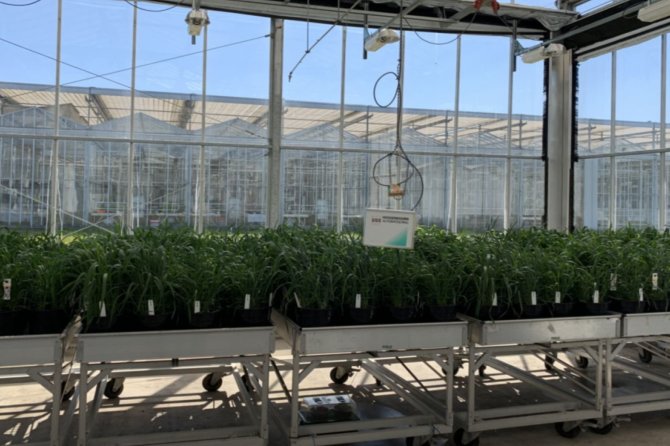
Project
From leaf to canopy: how wheat responds to climate change?
Wheat (Triticum aestivum L.) is one of most important staple food crops across the world, but global wheat production is facing stagnation largely because of the influence of global warming and extreme climatic events, such as heat waves and drought. The objectives of this project are to investigate how wheat photosynthesis (at leaf and canopy scales) and source-sink balance respond to various growth environments, and to predict the wheat performance in response to the projected future climate change.
Background
The ongoing climate change and extreme climatic events (ECEs) are predicted to become more frequent and more intense (IPCC 2021). Understanding how these climatic events affect crop physiological processes at multi-scales will be critical for global food security and for modelling crop productivity and carbon budgets of (agro)ecosystems in response to climate change.
Project description
Acclimation of plant physiological processes to changes in environmental conditions are key components of plant adaptation to climate change. Photosynthesis responds to environmental variables, in both short- and long-terms; however, quantitative information about which components of photosynthesis (e.g., light conversion, CO2 capture, metabolic activities), and to what extent they are affected by environmental variables is generally lacking.
Leaf scale
At leaf scale, a classical steady-state biochemical model of Farquhar, von Caemmerer and Berry (the FvCB model) has been widely used to analyze leaf photosynthesis. With an extended FvCB model and the gas exchange and chlorophyll fluorescence data measured by a portable photosynthetic system (Li-Cor 6800; Li-Cor Inc., Lincoln, NE, USA), we aim to quantify the temperature response of leaf photosynthetic parameters of wheat grown under various growth environments, and to assess to what extent these photosynthetic parameters acclimate to various growth environments and to what extent ignoring these acclimations would lead to errors in predicting photosynthesis.
Canopy scale
At canopy scale, we aim to explore how canopy photosynthesis responds to various growth conditions by exploiting and analyzing a dataset (unpublished) of canopy gas exchange collected already at INRAE, France. This gas exchange dataset was collected from experiments with a range of growth environmental treatments in wheat, and was collected by the C3-GEM (Crop Climate Control and Gas Exchange Measurement) facility with air temperature control and continuous gas exchange measurements. Further, by connecting the gas exchange data from leaf scale and from canopy scale, we aim to assess whether or not canopy photosynthesis can be predicted well by using parameter values of the FvCB model obtained at leaf scale when photosynthetic acclimation to various growth environments is considered.

Crop scale
At crop scale, grain yield in wheat is dependent not only on the availability of photosynthetic assimilates (source), but also on the capacity of grains to utilize available carbohydrates (sink). The source strength and sink size are both affected by environmental cues. Therefore, in addition to photosynthesis, we are also interested in investigating how environmental factors affect source-sink relationships in wheat. A quantitative model developed at CSA will be used to quantify the interactions of source supply and sink demand during the post-anthesis period and to identify the environmental variables involved in regulating these interactions.
Finally, quantitative information obtained from the above work packages will be integrated into process-based models (e.g., GECROS and SiriusQuality) to examine the response and performance of wheat crops from leaf scale to canopy scale and ultimately to the whole-season crop scale under contrasting growth environments, especially in the context of global climate change.
Publications
-
Drought exerts a greater influence than growth temperature on the temperature response of leaf day respiration in wheat (Triticum aestivum)
Plant Cell and Environment (2022), Volume: 45, Issue: 7 - ISSN 0140-7791 - p. 2062-2077. -
Neglecting acclimation of photosynthesis under drought can cause significant errors in predicting leaf photosynthesis in wheat
Global Change Biology (2023), Volume: 29, Issue: 2 - ISSN 1354-1013 - p. 505-521. -
Data underlying publication: Neglecting acclimation of photosynthesis under drought can cause significant errors in predicting leaf photosynthesis in wheat